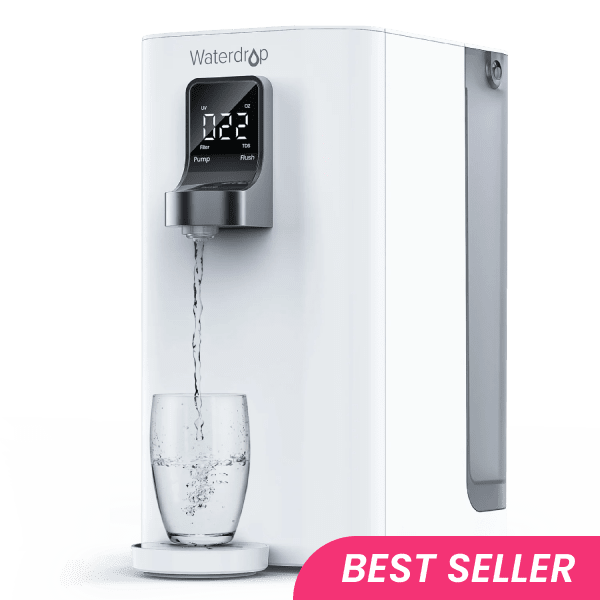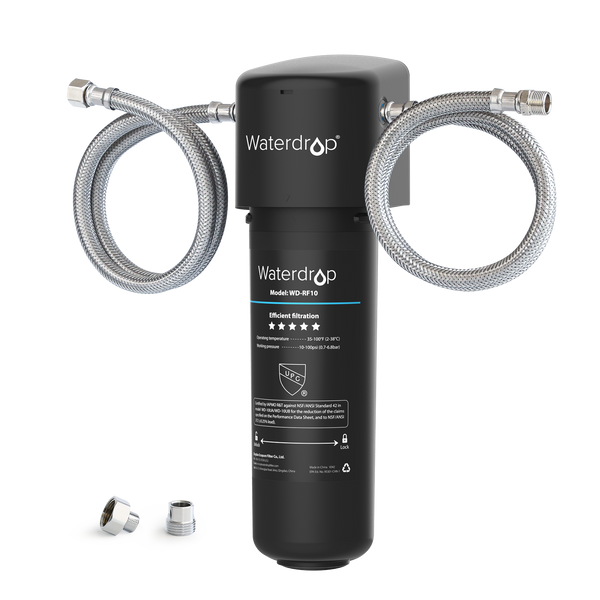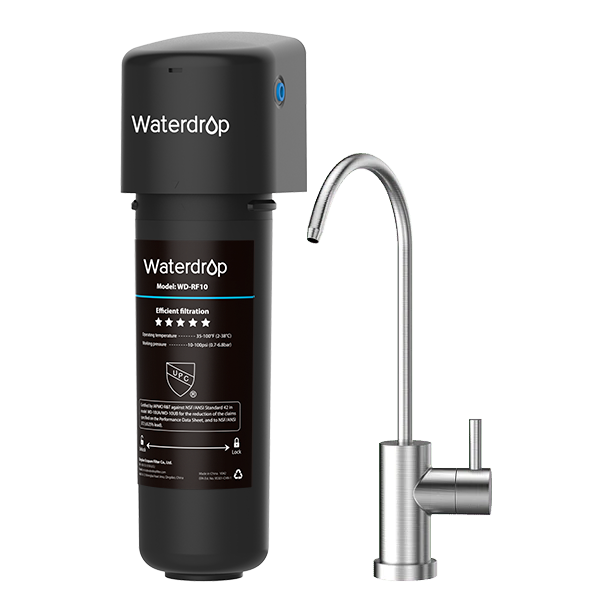How to Remove Copper from Water
by Dr. Jonathan Doyle - Updated January 25, 2022
As a metal element that exists widely in nature, copper is also one of the earliest metals used by human beings. The applications of copper can be seen in many places.
Our bodies also need trace copper elements to maintain good health, but too much copper can be harmful to the human body.
How does copper get into drinking water
Copper gets into your drinking water as it passes through your home plumbing system.
The main source of copper in drinking water is corrosion of household pipes, faucets, and water fixtures. Water absorbs copper as it leaches from plumbing materials such as pipes, fittings, and brass faucets. The amount of copper in the water depends on the type and amount of minerals in the water, how long the water stays in the pipe, the temperature of the water, and the acidity.
What are safe levels of copper in drinking water
The World Health Organization recommends that for health maintenance, adults should consume 0.03 mg of copper per kilogram of body weight per day. The intake amount for pregnant women and infants should double. Copper deficiency can cause various diseases and can be supplemented by taking copper-containing supplements and pills.
According to the Environmental Protection Agency (EPA), it is safe to maintain copper levels in water at 1.3 parts per million (or 1.3 mg/L) or less. The EPA has set a limit of 1.3 parts per million (ppm) as the maximum contamination level for copper in water, which is a health-based amount, and a level with no known adverse effects on human health.
What are the side effects of copper in drinking water
Copper plays an important role in maintaining nerve cells and the immune system, making red blood cells, and helping the body absorb collagen. However, too much copper intake can affect the liver and kidneys’ health, causing nausea, vomiting, diarrhea, and stomach cramps. Children under one year of age and the elderly are more susceptible to its toxic effects.
From a health perspective, copper in drinking water should be less than 2mg/L, and water greater than 3mg/L will have a peculiar smell.
How do you test for copper in water
The copper content in water can be observed through naked eyes. Low levels of copper in water often leave green/blue stains on faucets, plumbing, vanities, showers, or toilets. This water is still safe to drink, and normally with no bitter or metallic taste.
High levels of copper often leave a metallic or unpleasant bitter taste in drinking water. This water may not be safe to drink and you should contact your drinking water supplier or have the water professionally tested.
How do you remove copper from water
Reverse osmosis, distillation, and ion exchange are three effective methods to remove copper from water. It’s worth knowing that boiling is not only incapable of removing the copper in the water but also increases the copper concentration in the water due to the evaporation of the water. Additionally, the common chlorine disinfection process would not remove copper from the water.
Reverse Osmosis
Reverse osmosis is a water filtration technology that works by forcing water through a semipermeable membrane under a certain pressure. The membrane contains numerous tiny pores with a size of 0.0001 micron, which is only big enough to allow water molecules to pass through while blocking the impurities like copper.
The reverse osmosis system has become one of the most popular water filtration systems for home use. The system is usually be placed under the kitchen sink and generates clean water through a separated faucet.
The Waterdrop G3 reverse osmosis system is the star product you can find on the market. This under sink water filter compact and easy to install. Unlike traditional RO systems that come with a water tank, the Waterdrop system is the first tankless system launched on the U.S. market. The system is tested against NSF 58 and NSF 372 for lead-free material and a high TDS removal rate.
Although a certain amount of Copper is needed to maintain body health, the Copper required for this part can be obtained by eating food every day. It can be consumed through your diet, in foods such as liver, seafood, beans, and whole grains. So there is no need to worry about the adverse effects of drinking reverse osmosis filtered water on the body.
Distillation
Distillation purifies water through boiling. The unfiltered water generates water vapor by heating, when water vapor rises up and touches the cold surface of a container, it would condense into pure water and leave the impurities behind.
Heavy metals like copper can be removed through distillation. Yet, the energy and time consumption of distillation makes it less ideal for home use purposes.
Ion exchange filters
Ion exchange is another great way to remove copper in water. It works by exchanging copper ions with hydrogen, or hydroxyl ions. The hydrogen ions would stay in a bed of resin beads where unfiltered water would pass through.
The ion exchange filters would not only remove heavy metals like copper but also reduce water hardness by removing minerals like calcium and magnesium. The downside of this method is the frequent filter replacement as the filters can be easily clogged with impurities and waste.
How to reduce the risk of copper getting into your water
To prevent copper from getting into the water, you can turn on the faucet and flush the water system using cold water. The whole process would take approximately 30 seconds to finish. Copper can accumulate easily when the faucet is not in use for six or more hours, therefore, it is important to let cold running water pass through every morning when you turn on the faucet.
Additionally, it has to be cold water as copper can be dissolved in hot water.
Contaminants Detected in Fruitland Water Special Service District
30
Contaminants
EXCEED EWG HEALTH GUIDELINES
EXCEED EWG HEALTH GUIDELINES
30 Total Contaminants in Your Water
Water Provider
Fruitland Water Special Service DistrictPopulation Affected
120,000Water Source
Ground waterExceeds Guidelines
Others Detected















